Thailand (ประเทศไทย) Travel Guide, officially the Kingdom of Thailand (ราชอาณาจักรไทย) is a country in Southeast Asia with coasts on the Andaman Sea and the Gulf of Thailand. It borders Myanmar (Burma) to the northwest, Laos to the northeast, Cambodia to the southeast and Malaysia to the south.
With great food, a tropical climate, fascinating culture, majestic mountains and great beaches, Thailand is a magnet for travellers the world over.
- Bangkok — Thailand’s bustling, frenetic capital, known among the Thai as Krung Thep
- Ayutthaya — a historical city, UNESCO World Heritage Site and old capital of Siam
- Chiang Mai — de facto capital of Northern Thailand and the heart of Lanna culture
- Chiang Rai — gateway to the Golden Triangle, ethnic minorities and mountain trekkings
- Kanchanaburi — home of the bridge over the River Kwai and numerous World War II museums
- Nakhon Ratchasima — largest city of the Isaan region
- Pattaya — one of the main tourist destinations, known for its nightlife
- Sukhothai — Thailand’s first capital, with amazing ruins still
- Surat Thani — home of the Srivijaya Empire, gateway to the Samui archipelago
- Ko Chang — once a quiet island, now undergoing major tourism development
- Ko Lipe — small island in the middle of Tarutao National Park, amazingly unspoiled with great reefs and beaches
- Ko Pha Ngan — site of the famous Full Moon Party with miles of quiet coastline
- Ko Samet — the nearest island beach escape from Bangkok
- Ko Samui — comfortable, nature, and entertainment hippie hangout gone upmarket
- Khao Lak — gateway to the Similan Islands, hard hit by the 2004 tsunami, but vibrant once more
- Khao Sok National Park — one of the most beautiful wildlife reserves in Thailand
- Khao Yai National Park — take a night time 4×4 safari spotting deer or visit the spectacular waterfalls
- Krabi Province — beach and watersports hub in the south, includes Ao Nang, Rai Leh, Ko Phi Phi and Ko Lanta
- Phuket — the original Thai paradise island, now very developed, but still with some beautiful beaches
History
The earliest identifiably Thai kingdom was founded in Sukhothai in 1238, reaching its zenith under King Ramkhamhaeng in the 14th century before falling under the control of the kingdom of Ayutthaya, which ruled most of present-day Thailand and much of today’s Laos and Cambodia as well, eventually also absorbing the northern kingdom of Lanna. Ayutthaya was sacked in 1767 by the Burmese, but King Taksin regrouped and founded a new capital at Thonburi. His successor, General Chakri, moved across the river to Bangkok and became King Rama I, the founding father of the Chakri dynasty that rules (constitutionally) to this day.
Known as Siam until 1939, Thailand is the only Southeast Asian country never to have been colonised by a foreign power, and is fiercely proud of the fact. A bloodless revolution in 1932 led to a constitutional monarchy. During World War II, while Japan conquered the rest of Southeast Asia, only Thailand was not conquered by the Japanese due to smart political moves. In alliance with Japan during World War II, Thailand became a US ally following the conflict. After a string of military dictatorships and quickly toppled civilian Prime Ministers, Thailand finally stabilized into a fair approximation of a democracy and the economy boomed through tourism and industry. Above it all presided King Bhumibol Adulyadej (Rama IX), the world’s longest-reigning monarch and a deeply loved and respected figure of near-mythic proportions.
In September 2006, a swift and bloodless military coup overthrew populist tycoon Thaksin Shinawatra’s democratically elected but widely criticized government, exposing a fault line between the urban elite that has ruled Thailand and the rural masses that supported Thaksin. Thaksin went into exile and a series of unstable governments followed, with the successors of Thaksin’s Thai Rak Thai party and the royalist-conservative People’s Alliance for Democracy duelling both behind the scenes and, occasionally, out in the streets, culminating in Bangkok’s airports being seized and shut down for a week in November 2008. The political scene remains in flux and the direction of the country once the ailing King passes away is a major question mark because of the perceived inadequacy of the current heir.
Politics
Thailand is a constitutional monarchy, with the king as a very highly respected and revered Head of State. The Thai parliament is bicameral, consisting of a Senate, of which about half are directly elected with each province electing one member, and the other half being appointed by a committee, as well as a lower house which is directly elected by the people. The Prime Minister is the Head of Government, and is usually the leader of the party with the most seats in the lower house.
In practice, the king’s role is largely ceremonial, with the Prime Minister holding the most authority in government. However, the king and the royal family are still protected by strict lèse majesté laws, which stipulate long jail terms for anybody convicted of insulting the king or any other members of the royal family.
Climate
Thailand is largely tropical, so it’s hot and humid all year around with temperatures in the 28-35°C range (82-95°F), a degree of relief provided only in the mountains in the far north of Thailand. The careful observer will, however, note three seasons:
Cool: From November to the end of February, it doesn’t rain much and temperatures are at their lowest, although you will barely notice the difference in the south and will only need to pack a sweater if hiking in the northern mountains, where temperatures can fall as low as 5°C. This is the most popular time to visit and, especially around Christmas and New Year’s or at Chinese New Year a few weeks later, finding flights and accommodation can be expensive and difficult.
Hot: From March to June, Thailand swelters in temperatures as high as 40°C (104°F). Pleasant enough when sitting on the beach with a drink in hand, but not the best time of year to go temple-tramping in Bangkok.
Rainy: From July to October, although it only really gets under way in September, tropical monsoons hit most of the country. This doesn’t mean it rains non-stop, but when it does it pours and flooding is not uncommon.
There are local deviations to these general patterns. In particular, the south-east coast of Thailand (including Ko Samui) has the rains reversed, with the peak season being May-October and the rainy off season in November-February.
People
Thailand’s people are largely indigenous, although there are significant minorities of ethnic Chinese and assimilated Thai-Chinese throughout the country, Muslims in the south near the Malaysian border and hill tribes such as the Karen and the Hmong in the north of the country. The overwhelmingly dominant religion (95%) is Theravada Buddhism, although there are adherents to Confucianism, Islam, Christianity and animist faiths.
Culture
Mainland Thai culture is heavily influenced by Buddhism. However, unlike the Buddhist countries of East Asia, Thailand’s Buddhists follow the Theravada school, which is arguably closer to its Indian roots and places a heavier emphasis on monasticism. Thai temples known as wats, resplendent with gold and easily identifiable with their ornate, multicoloured, pointy roofs are ubiquitous and becoming an orange-robed monk for a short period, typically the three-month rainy season, is a common rite of passage for young Thai boys and men.
One pre-Buddhist tradition that still survives is the spirit house (ศาลพระภูมิ saan phraphuum), usually found at the corner of any house or business, which houses spirits so they don’t enter the house and cause trouble. The grander the building, the larger the spirit house, and buildings placed in particularly unlucky spots may have very large ones. Perhaps the most famous spirit house in Thailand is the Erawan Shrine in Bangkok, which protects the Erawan Hotel (now the Grand Hyatt Erawan) – built in 1956 on a former execution ground – and is now one of the busiest and most popular shrines in the city.
Some traditional arts popular in Thailand include traditional Thai dancing and music, based on religious rituals and court entertainment. Famously brutal Thai boxing (muay Thai), derived from the military training of Thai warriors, is undoubtedly the country’s best known indigenous sport.
In addition to the mainland Thai culture, there are many other cultures in Thailand including those of the “hill tribes” in the northern mountainous regions of Thailand (e.g., Hmong, Karen, Lisu, Lahu, Akha), the southern Muslims, and indigenous island peoples of the Andaman Sea.
Historical and cultural attractions
Bangkok is at the start of many visitors’ itineraries, and while a modern city, it has a rich cultural heritage. Most visitors at least take in the Grand Palace, a collection of highly decorated buildings and monuments. It is home to Wat Phra Kaew, the most sacred Buddhist temple in Thailand that houses the Emerald Buddha. Other cultural attractions include Wat Pho, Wat Arun and Jim Thompson’s House, but these are just a fraction of possible sights you could visit.
The former capitals of Siam, Ayutthaya and Sukhothai, make excellent stops for those interested in Thai history. The latter could be combined with a visit to Si Satchanalai and Kamphaeng Phet, all of which are UNESCO World Heritage Sites. Khmer architecture is mostly found in Isaan, with the historical remains of Phimai and Phanom Rung being the most significant.
In the northern provinces live unique hill-tribe peoples, often visited as part of a trekking. The six major hill tribes in Thailand are the Akha, Lahu, Karen, Hmong, Mien and Lisu, each with a distinct language and culture. Chiang Mai makes a good base for arranging these trekkings, and has some cultural sights of its own, such as Wat Doi Suthep.
For those interested in recent history, Kanchanaburi has a lot of sights related to World War II. The Bridge over the River Kwai, popularised by the film of the same name, is the most famous one, but the museums in its vicinity are a lot more moving.
Beaches and islands
Thailand’s beaches and islands attract millions of visitors each year from all over the globe. Hua Hin is Thailand’s oldest beach resort, discovered by King Rama VII in the 1920s as an ideal getaway from Bangkok. Things have considerably changed since then. While Pattaya, Phuket and Ko Samui were only discovered in the 1970s, these are now by far the most developed beach resorts.
Krabi Province has some beautiful spots, including Ao Nang, Rai Leh and the long golden beaches of Ko Lanta. Ko Phi Phi, renowned as a true paradise island, has been undergoing massive development since the release of the film The Beach in 2000. Ko Pha Ngan gives the best of both worlds, with well-developed beaches and empty ones a short ride away.
Ko Chang is a bit like Ko Samui used to be, it has a backpacker vibe, but is fairly laid-back and there is accommodation in all price ranges. If you’re looking for unspoiled beaches, Ko Kut is very thinly populated, but also difficult to explore. Ko Samet is the closest island beach to Bangkok, but its northern beaches are quite developed and hotels are pretty much sold out on weekends and public holidays.
Natural scenery
While not as beautiful as Malaysia or Indonesia, Thailand does have its fair share of tropical forest. Khao Yai National Park, the first national park of Thailand, is the closest to Bangkok. Wild tigers and elephants are increasingly rare, but you can’t miss the macaques, gibbons, deer, and species of birds. The stretch of jungle at Khao Sok National Park is probably even more impressive, and you can spend the night in the middle of the jungle.
Waterfalls can be found all over Thailand. The Heo Suwat Waterfall in Khao Yai National Park and the 7-tiered Erawan Falls in Kanchanaburi are among the most visited, but the Thee Lor Sue Waterfall in Umphang and the 11-tiered Pa La-u Falls in Kaeng Krachan National Park are equally exciting. Finally, the gravity-defying limestone formations of the Phang Nga Bay shouldn’t be missed by anyone who stays in the region.
The official language of Thailand is Thai. Like Mandarin and Vietnamese, Thai is a tonal language (think about the difference in your voice when saying “yes.” versus “yes?” – that’s tonal) which can make it tricky for speakers of non-tonal languages to learn quickly, but despite this, everyone will appreciate any attempt you do make so pick up a phrasebook and give it a go. Thai is a language with many dialects, though the Bangkok dialect, also known as Central Thai, is used as the standard and is taught in all schools. Language schools can be found in all larger Thai cities, including Bangkok and Phuket.
In the Muslim-dominated south, dialects of Malay that are largely incomprehensible to speakers of standard Malay/Indonesian are spoken.
Various dialects of Chinese are spoken by the ethnic Chinese community, with Teochew being the dominant dialect in Bangkok’s Chinatown, and Cantonese speakers also forming a sizeable minority among the Chinese community. Down south in Hat Yai, Hokkien is also widely understood due to the large number of tourists from Penang. Mandarin is taught in most Chinese schools while Cantonese is commonly heard in the mass media due to the popularity of TVB serials from Hong Kong among the Chinese community, so many are conversant in both, in addition to their native dialect.
The eastern Isaan dialects are closely related to Lao. In the eastern provinces of Thailand bordering Cambodia, there are various ethnic Khmer communities, known locally as the Khmer Surin, who speak various dialects of Khmer. The remote hill areas of Thailand are also home to various tribal people known as the Hill Tribes, who speak various indigenous languages such as Hmong, Karen and many others – some of these are so remote that Thai speakers are few and far between.
Sanskrit is taught to those who attend Buddhist religious schools, and many clerics as well as other very observant Buddhists will have a functional command of Sanskrit. However, it is not widely spoken, though the Thai language does have a large number of loan words from Sanskrit.
Public signage is generally bilingual, written in both Thai and English. There is also some prevalance of Japanese and Chinese signs. Where there is English, it will usually be fairly phonetic – for example “Sawatdee” (meaning hello) is pronounced just as it reads: sa-wat-dee. There is no universal agreement on how to transcribe Thai letters that don’t have an English equivalent, so Khao San Road for example is also commonly spelled Kao Sarn, Kao Sahn, Khao San, Koh Saan, Khaosan, and many other variations. Maps with names in both Thai and English make it easier for locals to try and help you.
Most Thai youths learn English in school, so many young people have a basic grasp of English, though few are fluent. Most “front desk” people in the travel industry speak at least enough English to communicate, and many are relatively fluent; some also speak one or more other languages popular with their clientele, such as Chinese, Japanese, German, etc.
Many Thais have trouble pronouncing the consonant clusters of the English language. Common confusion comes from the fact that Thais often pronounce “twenty” as “TEH-wen-ty”, making it sound like they’re saying “seventy”. Therefore it is a good idea to make use of the calculators that street vendors may offer you to avoid confusion about prices offered when buying goods.
Thailand is a shopper’s paradise and many visitors to Bangkok in particular end up spending much of their time in the countless markets and malls. Particularly good buys are clothing, both cheap locally produced streetwear and fancy Thai silk, and all sorts of handicrafts. Electronics and computer gear are also widely available, but prices are slightly higher than in Singapore, Hong Kong, Philippines and Kuala Lumpur.
A Thai speciality are the night markets found in almost every town, the largest and best-known of which are in Bangkok and the Night Bazaar in Chiang Mai. Here a variety of vendors from designers to handicraft sellers have stalls selling goods which cannot normally be found in malls and day markets. Most night markets also have large open air food courts attached.
You can also find marvelously tacky modern clothing accessories. Witness pink sandals with clear plastic platform heels filled with fake flowers. Night markets along the main roads and Bangkok’s Mahboonkrong (MBK) Mall, near the Siam skytrain stop, are particularly good sources. Not to be left out is what is often touted as the world’s biggest weekend bazaar – The Chatuchak Weekend Market or knowned to locals simply as “JJ” Market. Chatuchak sells a myriad of products ranging from clothes to antiques, covers over 35 acres (1.1 km square) and is growing by the day!
Note, for some products in some markets haggling is the norm, especially in Bangkok. In some locations, market and road-side vendors will try to charge you as much as they think you can afford to pay. It’s not uncommon to buy something, walk outside, and find somebody who bought the same item for half or one third what you paid (or even less). Try to figure out the item’s rough value first — adjacent stalls, government-run fixed price shops and even hotel gift shops are a good starting point — and you’ll find that prices drop drastically when the seller realizes you have some idea of what it costs. However, it is important to note that haggling, is not at all common in many of the wet markets or those places with prepared foods. For example, in the local Chiang Mai marketplaces, vendors become deeply offended by the oblivious foreigner trying to get a discount on eggs or bananas or prepared foods by the roadside. At the same time, asking for a discount when trying to buy some souvenirs is generally ok, but the point is to not try and bargain hard as one might in other countries such as India.
If you want to receive new experience by shopping in the most luxurious shopping mall in Thailand, you should go visit the “Siam Paragon”. One of the most famous landmarks in Thailand which is located on “Rama I” Road in “Pathum Wan” district,at the middle of teenager’s walking street called “Siam”. You could visit Siam Paragon by driving your car or take the BTS train either at Sukhumvit or Silom lines and get off when you reach Siam station.
That said, something like custom tailored suits are generally hugely marked up for the foreign visitor, but good luck getting a reasonable price.

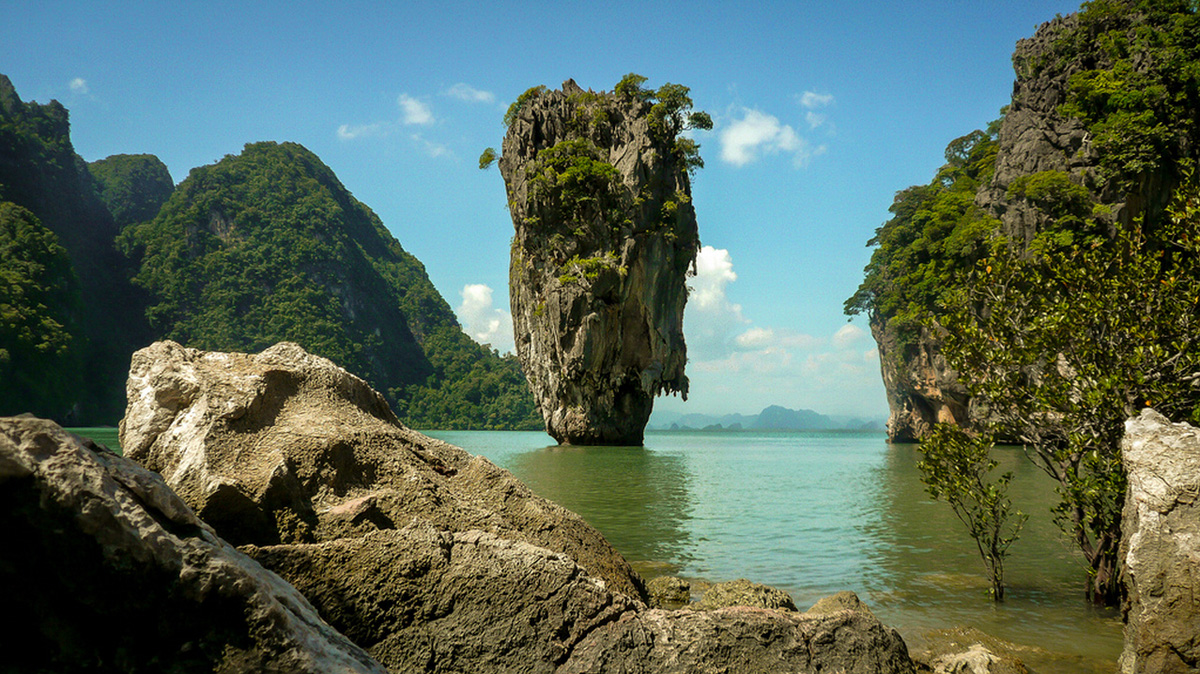
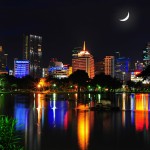
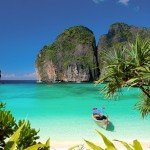
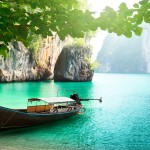
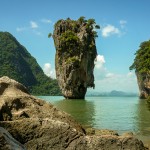
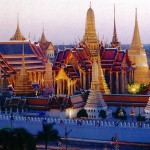
0 Comments